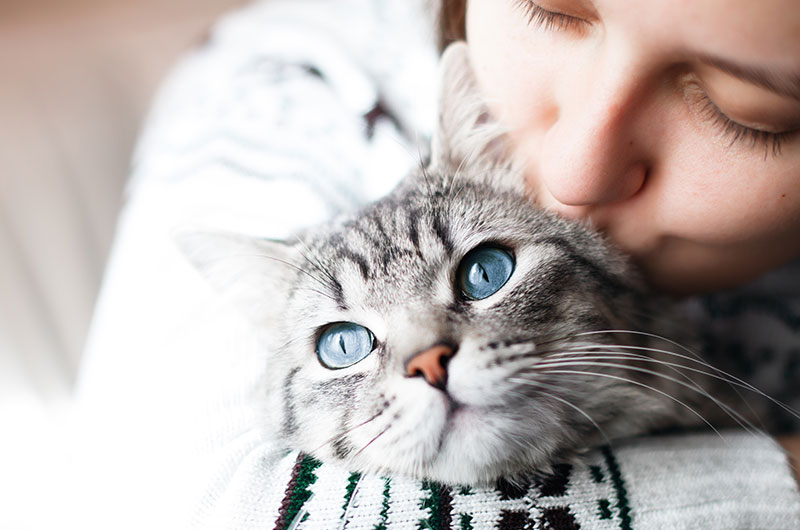Ultrasound
When a pet is ill, injured, or experiencing another medical condition, we often need to acquire additional health information beyond what we can gather from a physical examination to achieve a diagnosis or more closely assess your pet’s condition. When this is the case, we might recommend an ultrasound.


What Is an Ultrasound?
An ultrasound (also called a sonogram) is a real-time, moving image of the body’s internal structures. Sonograms are produced using sound waves.
An ultrasound machine uses a special wand that emits high-frequency sound waves that pass through the body’s tissues. The sound waves bounce off of objects and are detected by the ultrasound wand. The ultrasound machine then translates that data into an image our veterinarian can use to evaluate your pet’s internal structures, their form, size, placement, and function.
How Is an Ultrasound Different From an X-Ray?
X-rays and ultrasounds both produce images of internal structures, but they are quite different. Radiographs produced with x-rays are like snapshots, while sonograms are more like movies.


How Our Veterinarians Use Ultrasound
Veterinarians use ultrasound in a variety of diagnostic situations when exploratory surgery would have otherwise been needed to evaluate an injury or gather more information to determine the underlying cause of a sick pet’s symptoms. We even use ultrasound to track the development of a pregnant dog’s or cat’s puppies or kittens.
Ultrasound can be used to locate ingested foreign objects and to aid in the diagnosis of countless medical conditions including abnormal masses and orthopedic, respiratory, cardiovascular, gastrointestinal, and circulatory issues.
What to Expect When Your Pet Needs an Ultrasound
Ultrasound procedures are non-invasive and pain-free. In fact, many pets become quite relaxed during ultrasound appointments, so there’s usually no need for them to be sedated during their exams.
Depending on the ultrasound location, a small patch of fur might need to be shaved to allow the ultrasound wand to make unimpeded contact with your pet’s skin and produce a clear image.
Once ready, we’ll apply a small amount of special jelly to your pet’s skin and then move the ultrasound wand around the area, capturing the sonogram.
Our veterinarian will then assess the sonogram, talk with you about our findings, and recommend a treatment plan, if necessary.


Radiology and Comprehensive Veterinary Diagnostics in Takoma Park
In addition to ultrasound and digital x-ray technology, our veterinarians have access to a complete in-house laboratory. As a result, we’re able to get diagnostic test results back quickly for a speedy diagnosis so we can begin addressing your pet’s medical concerns right away.
To learn more about ultrasound or the other diagnostic testing available at Takoma Park Animal Clinic, we welcome you to contact us today.








